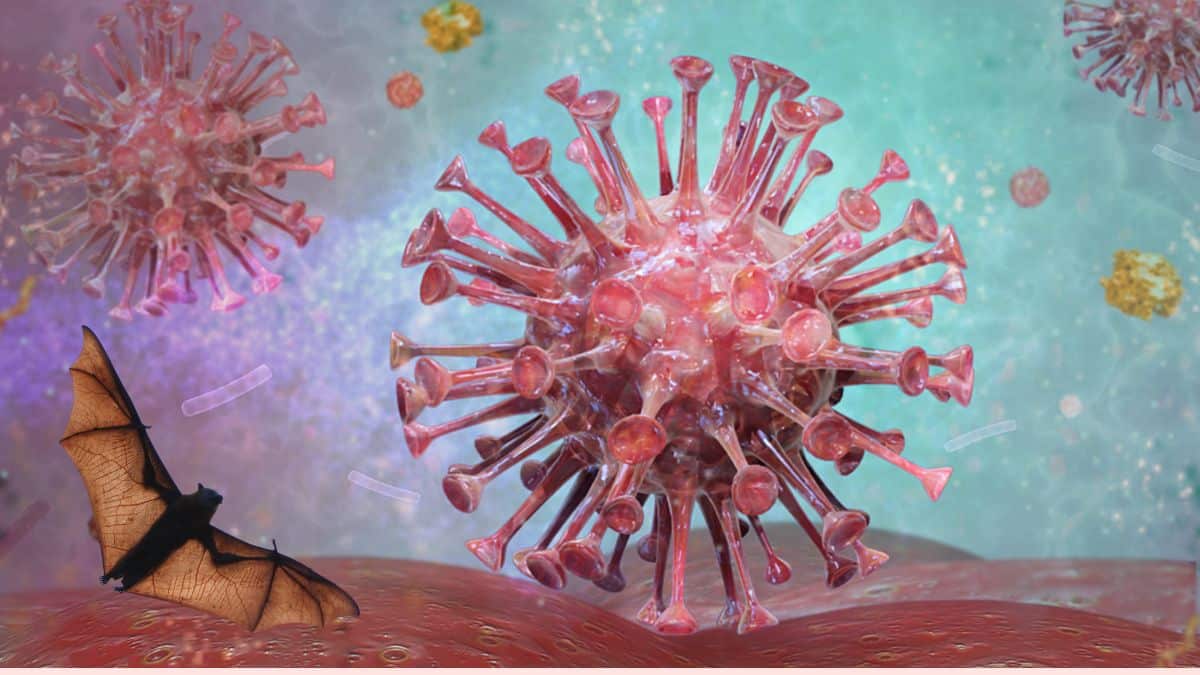Khosta-2 virus: Scientists raised warning Russian bat virus can induce infection among humans

Just after the world has gone through the COVID-19 pandemic, US scientists warned about a virus extracted from a Russian bat. Researchers claimed that this virus belongs to the same subcategory as coronavirus. This virus is named the Khosta-2 virus, known as Serbecovirus. In addition, this virus exhibits different trouble-causing symptoms and is quite resistant to the COVID-19 vaccines.
This Khosta-2 virus originated from the Russian bat. Moreover, it can also affect human beings, producing some severe problems. It can dodge the immune barrier created by the COVID-19 vaccine. This virus was initially discovered about two years ago In a Russian bat. Nobody takes it as a severe virus causing harmful symptoms. But after a scrutiny period with closer research, scientists warned that it can infect humans.
In a report in the journal PLoS Pathogens, a team of scientists led by Michae Letko introduced a new group of coronavirus that is quite similar to SARS-virus. Another virus found in Russian bats, Khosta-1, cannot evade the skin barriers or immune barriers of human beings. Moreover, it can produce any sort of infection in human beings.
What is the similarity pattern between the Khosta-2 and COVID-19 virus?
Talking about the similarity, these two viruses belong to the same group of viruses, the SARS virus. In addition, this Khosta-2 virus attaches to the same receptor protein ACE2 as the coronavirus. With the attachment to this receptor protein, both viruses can induce infection in human beings.
How can this virus spread worldwide threatening a pandemic?
Khosta-2 virus is a common zoonotic virus circulating in wildlife such as bats, raccoon dogs, or pangolins. In this way, this virus is almost present outside of Asia. At a very initial stage of research, it is quite difficult to state whether this virus can be lit up as a pandemic or an epidemic. There is no surety about statements like this.
But, scientists suggested that if the Khosta-2 virus gets mixed or combined with the SARS-COV-2 virus, it can cause serious respiratory or infectious problems. To be quite realistic, there are very small chances for both of these viruses to combine. But, this is possible and it raises some serious concerns about this virus.
What common facts must be known about the Khosta-2 virus?
The Khosta-2 virus is quite similar to the COVID-19 virus. But there are some specific features that differentiate both of these viruses despite belonging to the same subcategory.
- As the Khosta-2 virus originated from the Russian bats, this virus appeared in the human population after cross-species transmission through an animal source.
- In contrast to SARS-COV-2, this Khost-2 virus does not have a gene like the COVID-19 virus that is necessary to produce critical symptoms like COVID-19.
- Khosta-2 virus antigens can not be neutralized by the antibodies produced by the response of the COVID-19 vaccine. In addition, it also can not be neutralized with the antibodies produced in the patients recovered from OMICRON.
- This virus lacks some specific genes like COVID-19 to induce infection in human beings. So, for this reason, scientists think it is quite less harmful than COVID-19. But, if this virus gets mixed with the genes of COVID-19, it can cause some serious infections in human beings.
What are the known cases of this Khosta-2 virus?
Till now, there are no such cases of the Khosta-2 virus in the human population. It is only because the Khosta-2 virus lacks the specific gene to initiate infection symptoms in the human population.
What is the potential concern for scientists regarding this Khosta-2 virus?
Scientists are concerned about the problematic scenario as the combining genes of both the Khosta-2 and SARS-COV-2 virus. If the SARS-COV-2 virus infected the same animal harboring the Khosta-2 virus, it can cause some serious problems. The genes of both these viruses can get mixed and it may cause some severe problems in the human population.
For this reason, researchers highlight the major aspect of producing vaccines against the serbecovirus group. Otherwise, these respiratory viruses can turn a simple infection into a worldwide pandemic because of massive transmission. Scientists usually create specific vaccines related to the specific virus. But, there is a need to broaden the range and produce vaccines against a wide virus group range. This can help to break the transmission chain and prevent the human population from some serious infection.
Conclusion
Scientists raised some serious concerns about the Russian bat virus belonging to the serbecovirus group. This virus is similar to the SARS-COV-2 virus in several aspects like binding to the same receptor protein and same subcategory. This virus is termed as Khosat-2 virus. In addition, this virus gets attached to the angiotensin-converting enzyme 2 (ACE2) receptor protein. This receptor protein is a gateway for this virus to infect the human virus. SARS-COV-2 also binds to the same receptor protein and induces some serious respiratory symptoms.
In contrast to SARS-COV-2, this Khosta-2 virus lacks some specific genes to introduce some serious infectious symptoms in human beings. Therefore, scientists considered it less harmful than COVID-19. But, they also raised concerns about the combination of both viruses. When both these viruses get mixed, they can induce serious infections in human beings. Moreover, this Khosta-2 virus is resistant to the serum antibodies produced by the COVID-19 vaccines and also the survivors of COVID-19.
Scientists raised serious suggestions regarding the production of wide serbecovirus vaccines not only for specific viruses. It can help to get over the possible pandemics originating from the serbecovirus.
Frequently asked questions (FAQS)
Can the Khosta-2 virus emerge as a pandemic?
It is possible for the Khosta-2 virus to emerge as a pandemic in human populations. If the Khosta-2 virus combines with the SARS-COV-2, it can share the genetic material that can cause serious infection in the human population.
What are the natural reservoirs of these serbecoviruses?
These serbecovirues are usually found among wildlife like bats or pangolins. They can transmit from animals to humans through cross-transmission among the species. These are respiratory viruses and cause serious respiratory problems.




